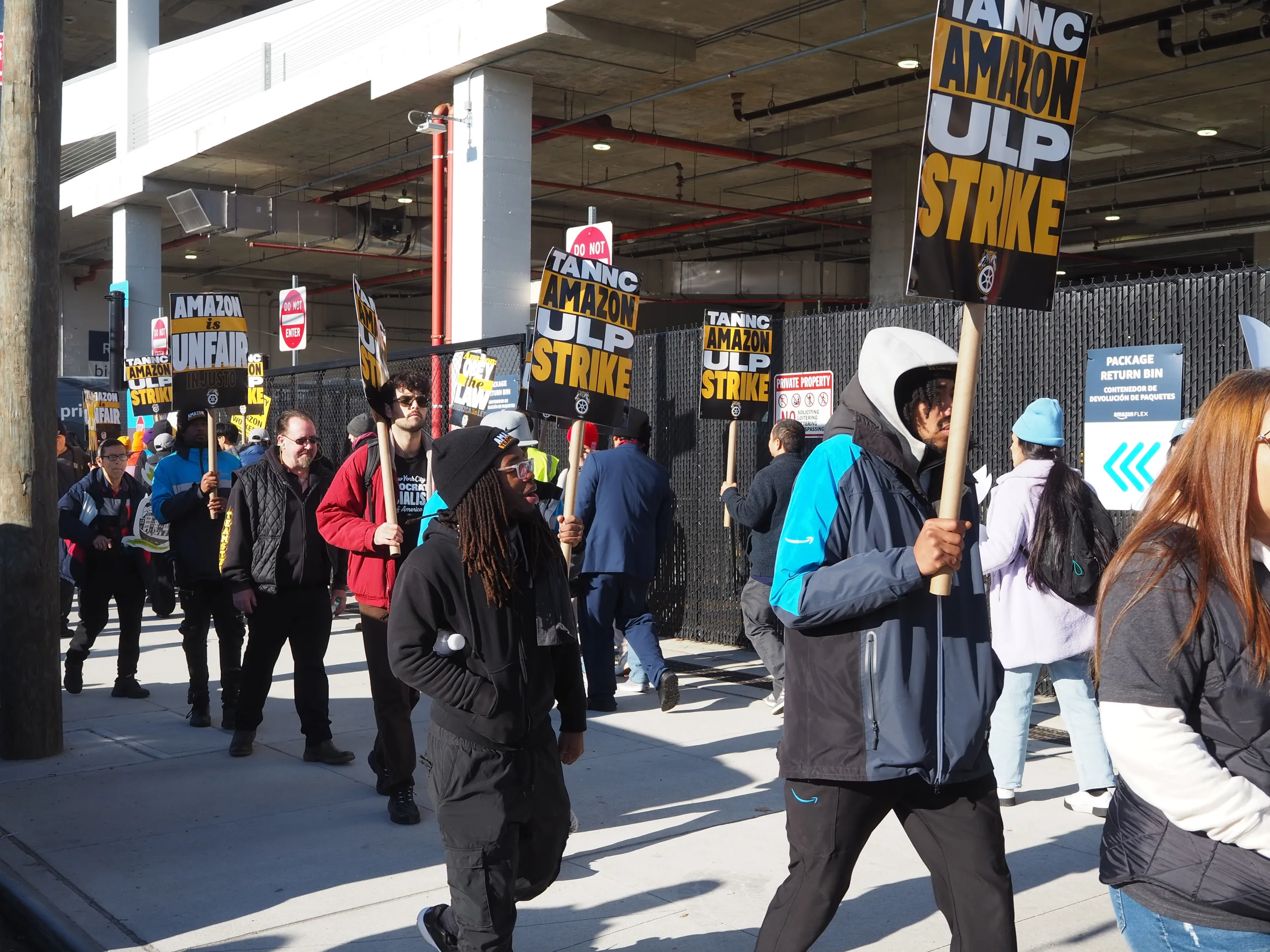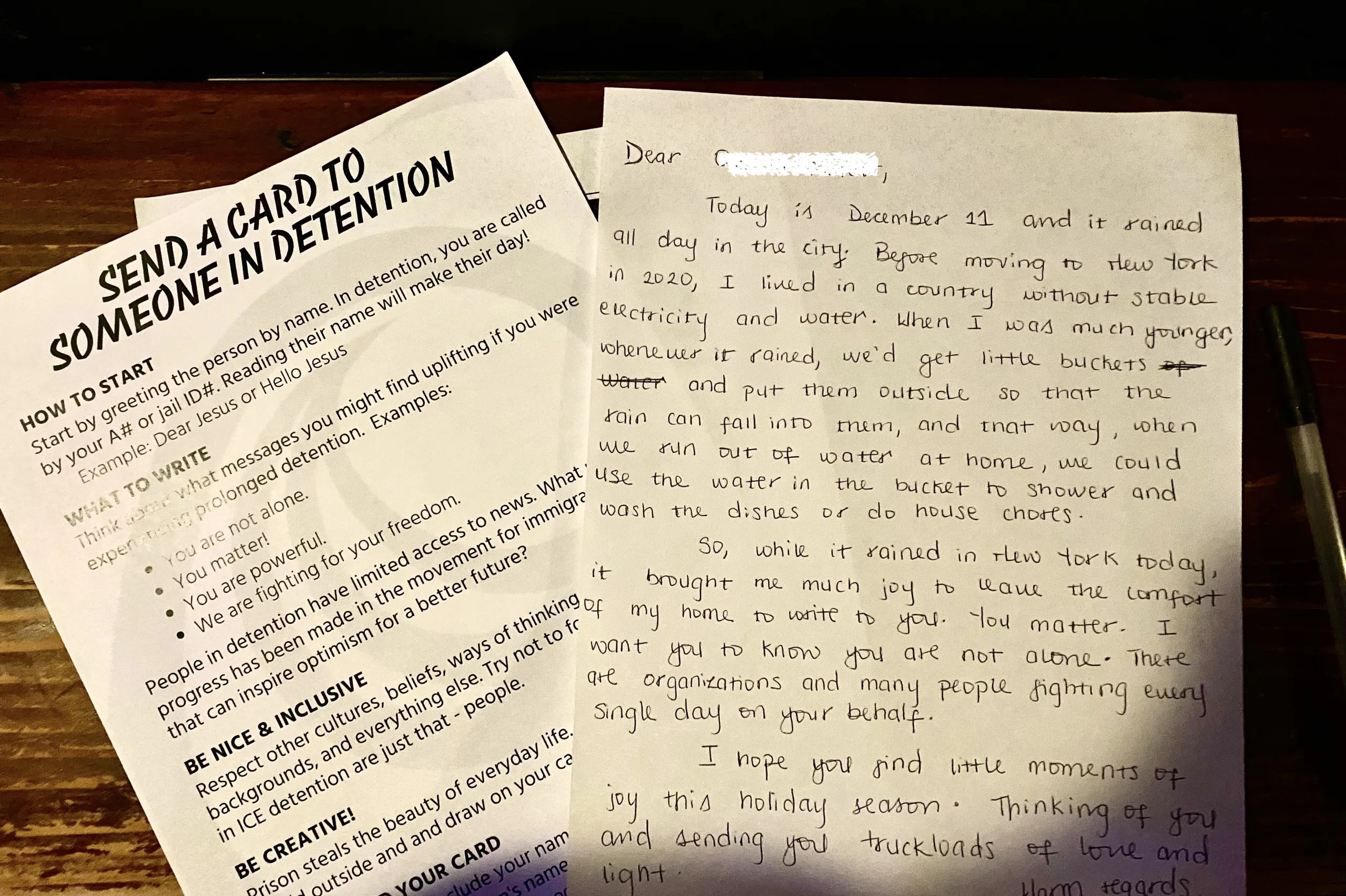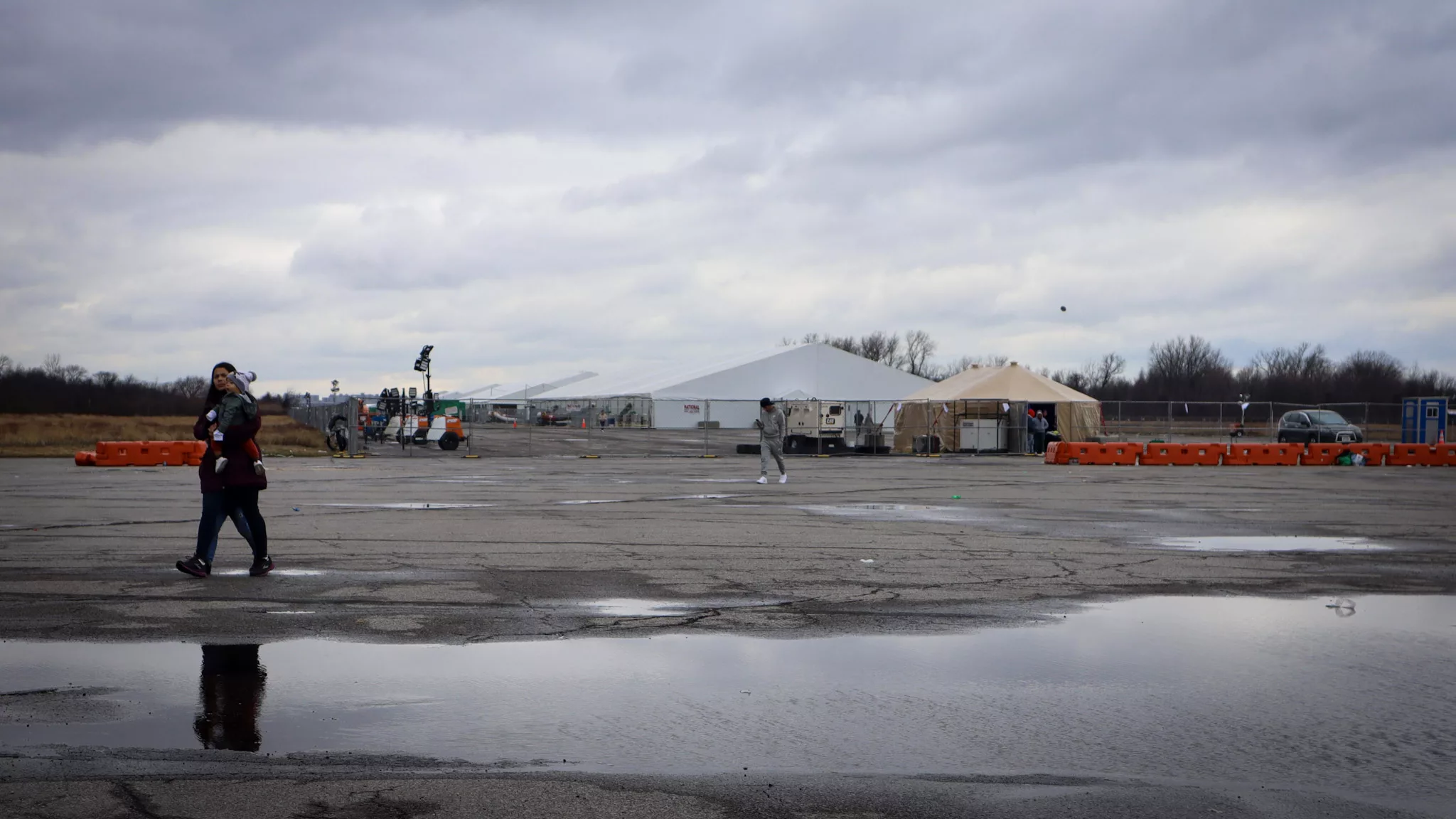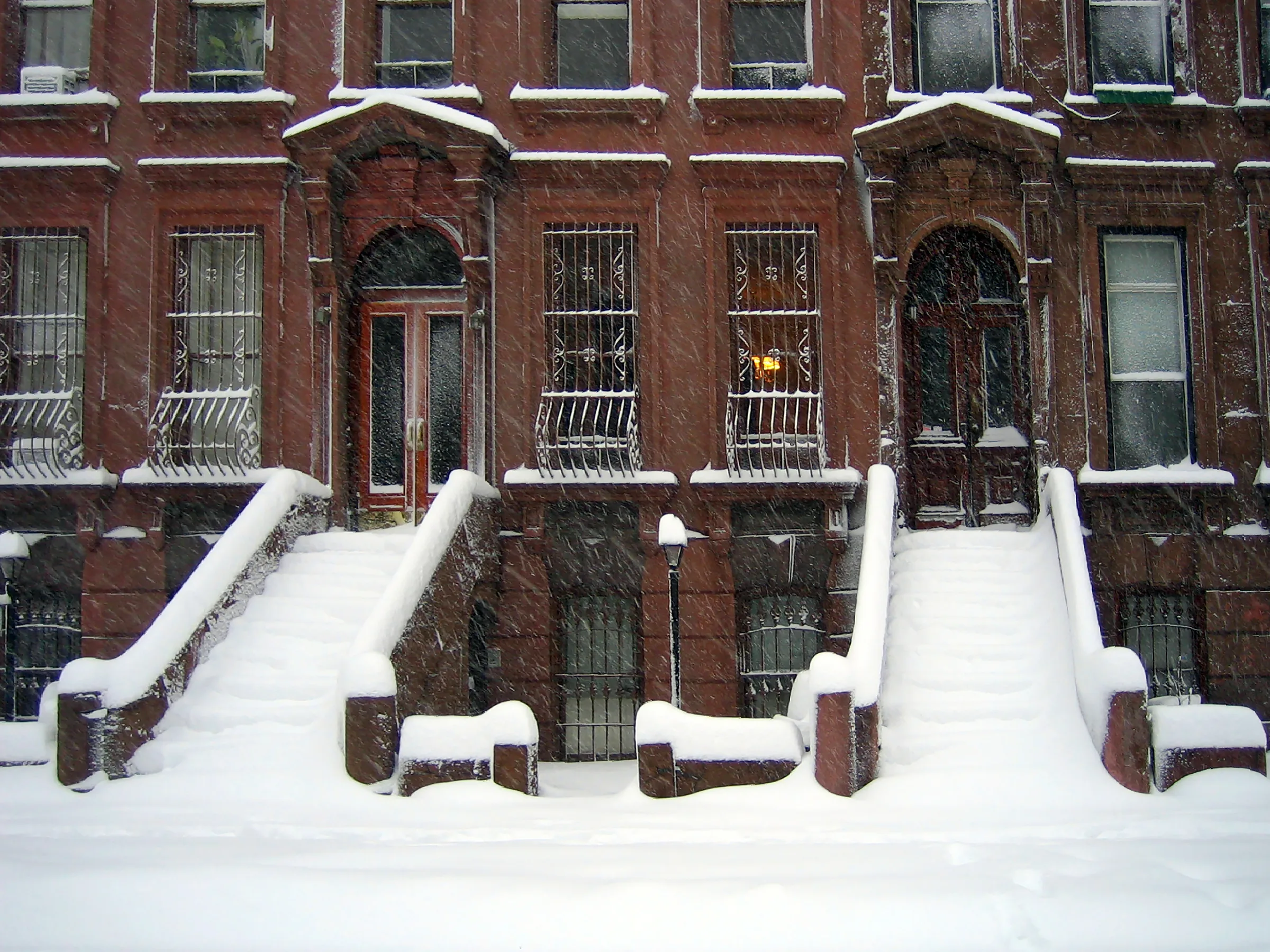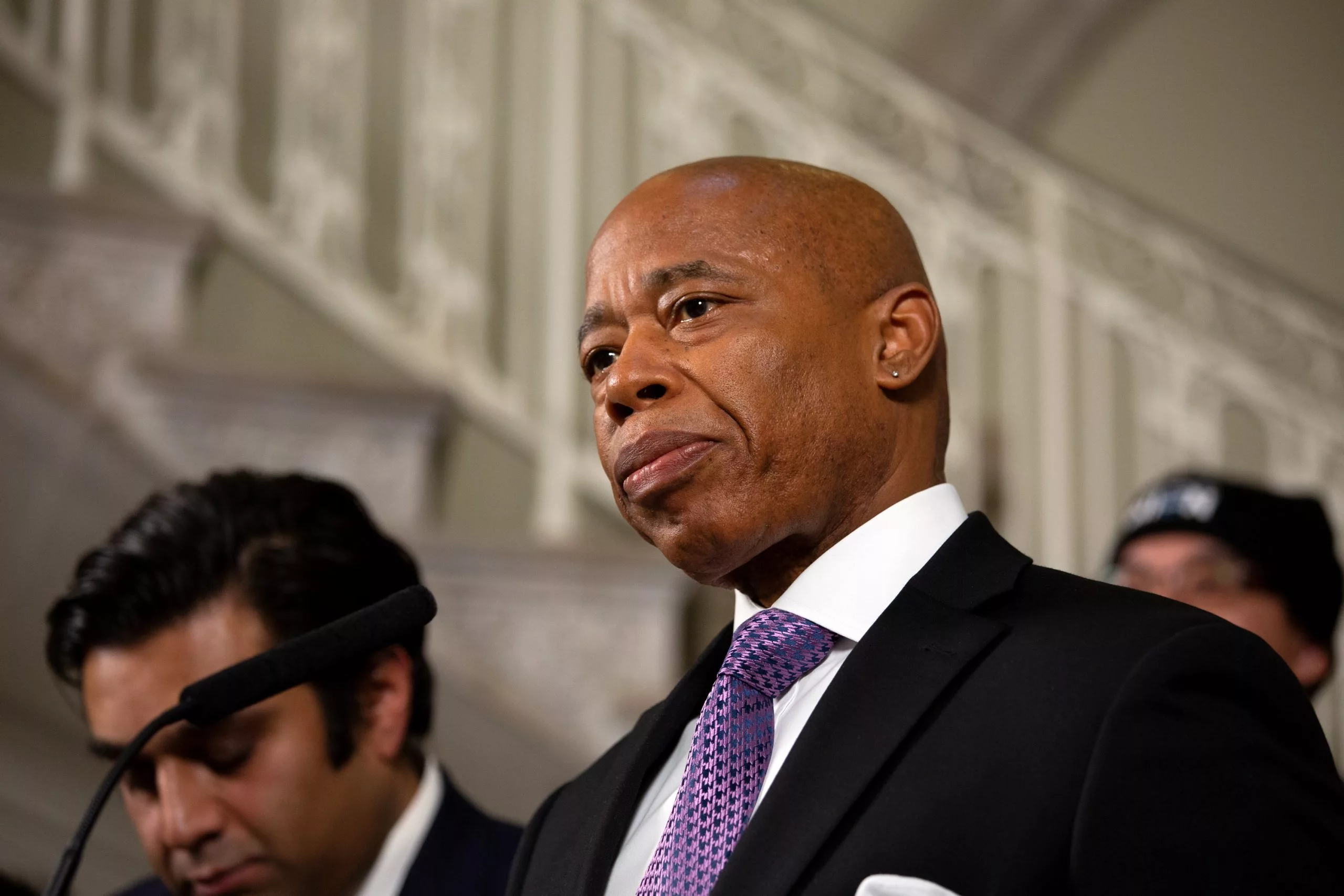For more than two days, some migrants have been camping outside the Watson Hotel in Hell’s Kitchen. The sidewalks next to the hotel were still occupied while we wrote this. They returned to the hotel after seeing the conditions at the Brooklyn Cruise Terminal where NYC is relocating them.
What happened outside the hotel?
The hotel has been housing single adult male migrants and asylum seekers since last year. But now, the New York City government is trying to transition the hotel to house migrant children and families. As a result, the City arranged for men at the hotel to be transported in buses to the new humanitarian relief center it opened this month at the Brooklyn Cruise Terminal in Red Hook.
When some of the migrants boarded City buses and arrived at the center in Red Hook, they said they found conditions were much worse than the hotel. Some returned to the hotel but were not let back in, so they slept on the street.
One of those migrants was Ivan Pereira, who is from Venezuela and has been in New York for about three months. He had lived in the Watson hotel for almost two months until, along with many other migrant men, staff asked him to leave the hotel. He acted accordingly on Monday morning.
“The first thing we want to do is follow their laws. If they want us to leave, we’ll leave,” Pereira said in Spanish. “We’re here in a peaceful manner.”
But he told Documented that for the time being, he would not be going to Red Hook.
“The conditions are inhumane,” Pereira said about the center, adding that he heard there were few bathrooms for hundreds of people.
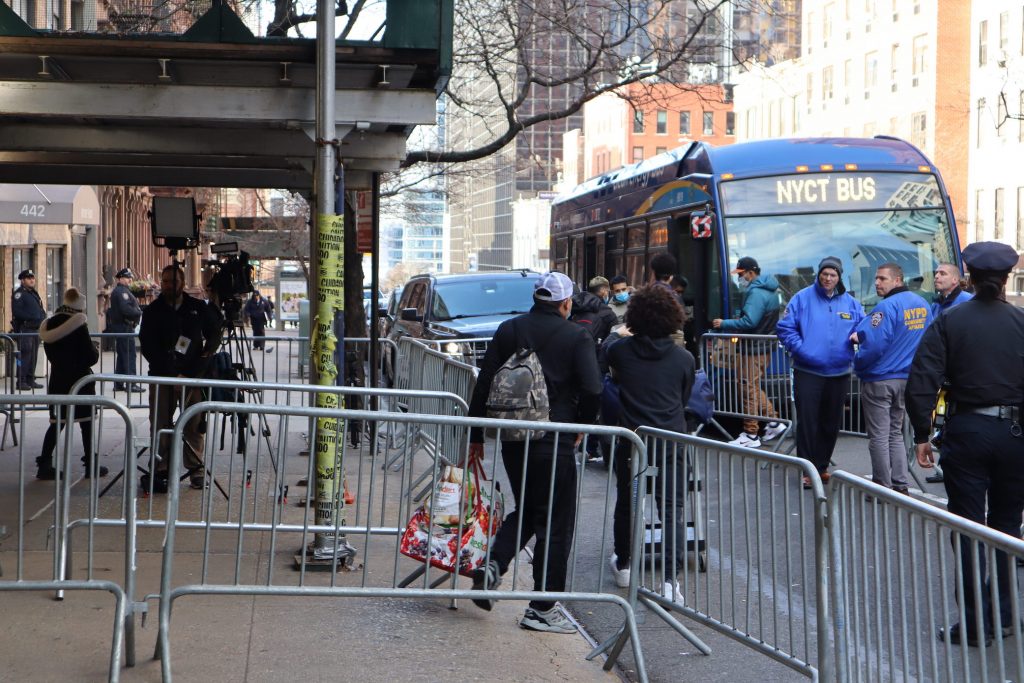
Also Read: New Yorkers Help Migrants Fleeing From Chaotic NYC Shelter System
Yet by Monday afternoon, Pereira was still standing outside the Watson Hotel, unsure of where he would sleep. Blankets, pillows and suitcases lined the sidewalk, and law enforcement placed metal barricades around the area where about 50 migrant men stood. Mutual aid groups set up a table with food, water and other supplies for the migrants.
After hearing what the center looked like, other migrants refused to board buses to Red Hook. Pereira slept on the street outside the hotel that night.
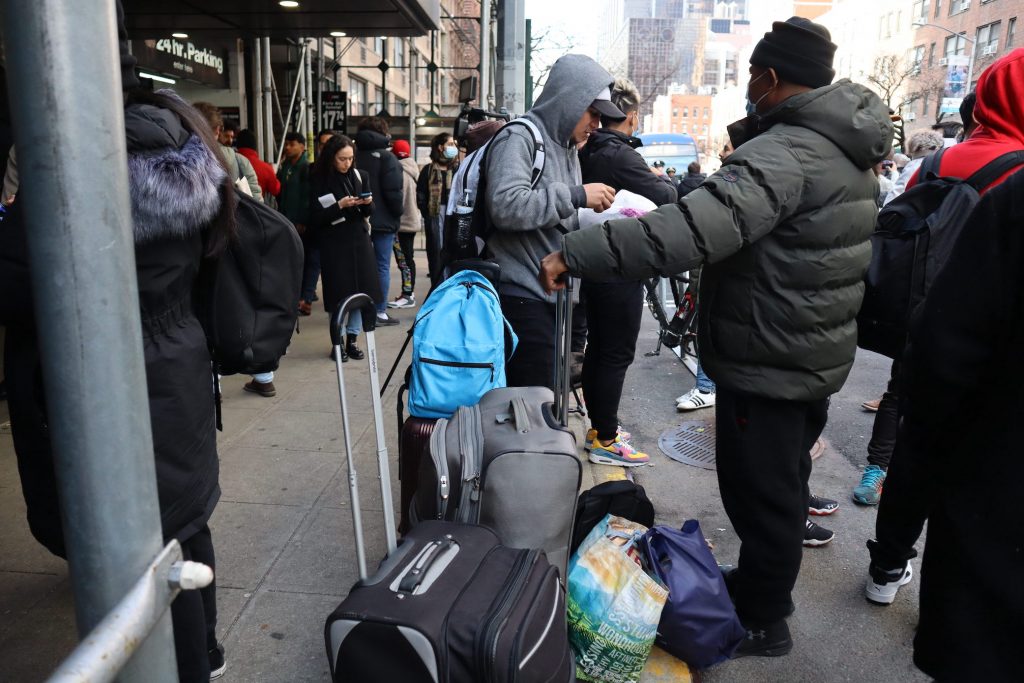
City officials say otherwise
City officials have said the Red Hook center is properly equipped to meet newly arrived migrants’ needs. The City released a statement at 10:13 pm last night saying “most of the asylum seekers from the Watson Hotel have moved to the Brooklyn Cruise Terminal” humanitarian relief center.
The Mayor’s Office of Immigrant Affairs Commissioner Manuel Castro visited the Watson Hotel earlier on Tuesday. He said he would take a bus to the Brooklyn Cruise Terminal in Red Hook so the migrants could “see for themselves the conditions.”
Immigrant advocates, migrants and others have said the center is cold and in a remote location far from public transport. Castro contended the center was temperature controlled and that those staying there could access transportation services.
“We’re battling misinformation,” Castro told the press outside the hotel, adding that it was spreading through social media. “For me it’s important that [the migrants] understand that we’re doing this for them to be in a safe environment where they can access resources.”
Castro added that the City’s hotels and shelters are at maximum capacity, and that the Watson Hotel was needed for children and families.
“This was always meant to be temporary, and we’ll continue to work with asylum seekers who arrive in our city to make sure that they have access to services,” Castro said.
Following the arrival of tens of thousands of migrants and asylum seekers since last summer, the City has been providing a number of services to asylum seekers including shelter, food, medical care, school enrollment, and resource centers.
Watch: A video from South Bronx Mutual Aid showing inside the humanitarian relief center at Red Hook
Watch: A video from WNYC’s Catalina Gonella taken yesterday showing Asylum seekers preparing for another night in the cold outside the Watson hotel
The City’s budget expense on migrant intake
A spokesperson from the mayor’s office told Documented this week that “the City projects we’ve spent $366 million between July 1 [2022] and December 31, 2022” on migrant services. Those months are within the City’s Fiscal Year 2023 — which began July 1, 2022 and ends June 30, 2023.
Mayor Eric Adams has said the City has been stretched to its limits and is now looking at a projected cost of $2 billion to manage its migrant intake. “The $2 billion figure is a guesstimate, as OMB [New York City Mayor’s Office of Management and Budget] will soon have an updated estimate to share,” the mayor’s spokesperson said.
Differences between the OMB’s projections and the IBO’s estimate: In November last year, the City’s Independent Budget Office (IBO) had estimated the costs that the City will incur over the course of a year to provide services to newly arrived asylum seekers. Based on the number of asylum seekers who had arrived as of early November, IBO projected the city will spend at least $596 million over a 12-month period beginning November 2022.
The Mayor’s office’s $2 billion guesstimate, on the other hand, covers the City’s fiscal year July 1 to June 30.
Further, the IBO assumed that the number of migrants would stabilize sooner, while the Mayor’s office assumed it would keep growing. “Our estimate assumes that the census growth trends continue, which has proven to be true to date,” a mayoral spokesperson said, adding that “as the number in our care continues to increase, costs will as well.”
The census: The number of “asylum seeker households in City shelter has increased by over 40% since IBO’s November estimate,” they said.
Over 41,600 asylum seekers have gone through the intake system and been offered a place to rest at night since last spring, according to the latest City data (Jan. 22, 2023). Over 27,500 asylum seekers are currently under New York City’s care, a spokesperson said.
Also Read: “Undocumented and Homeless: ‘Being in a Shelter was Not My Dream When I Came to America’ “
Housing costs: The city has worked with a number of partners to provide navigation centers, medical services, and social work or staffing services at the nearly 80 emergency shelters and the four humanitarian relief centers the city has opened. The centers include the shelter at Brooklyn Cruise Terminal, which the City launched this month, and the tent on Randall’s Island, which it opened and closed in less than a month. Zach Iscol, the Emergency Management commissioner said the city spent $325,000 to build the Randall’s Island tent shelter and roughly the same amount to initially site the camp at Orchard Beach before its relocation to the island — bringing the total cost to somewhere over $600,000.
Mayor Adams also reportedly agreed to a $275 million contract, announced last month, with the Hotel Association of New York City to house at least 5,000 migrants.
Volunteer organizations have done major work: Volunteers and community-based organizations have provided a major backbone to the City by providing assistance to asylum seekers too. Some of those organizations are on this list from the Mayor’s Office of Immigrant Affairs.


